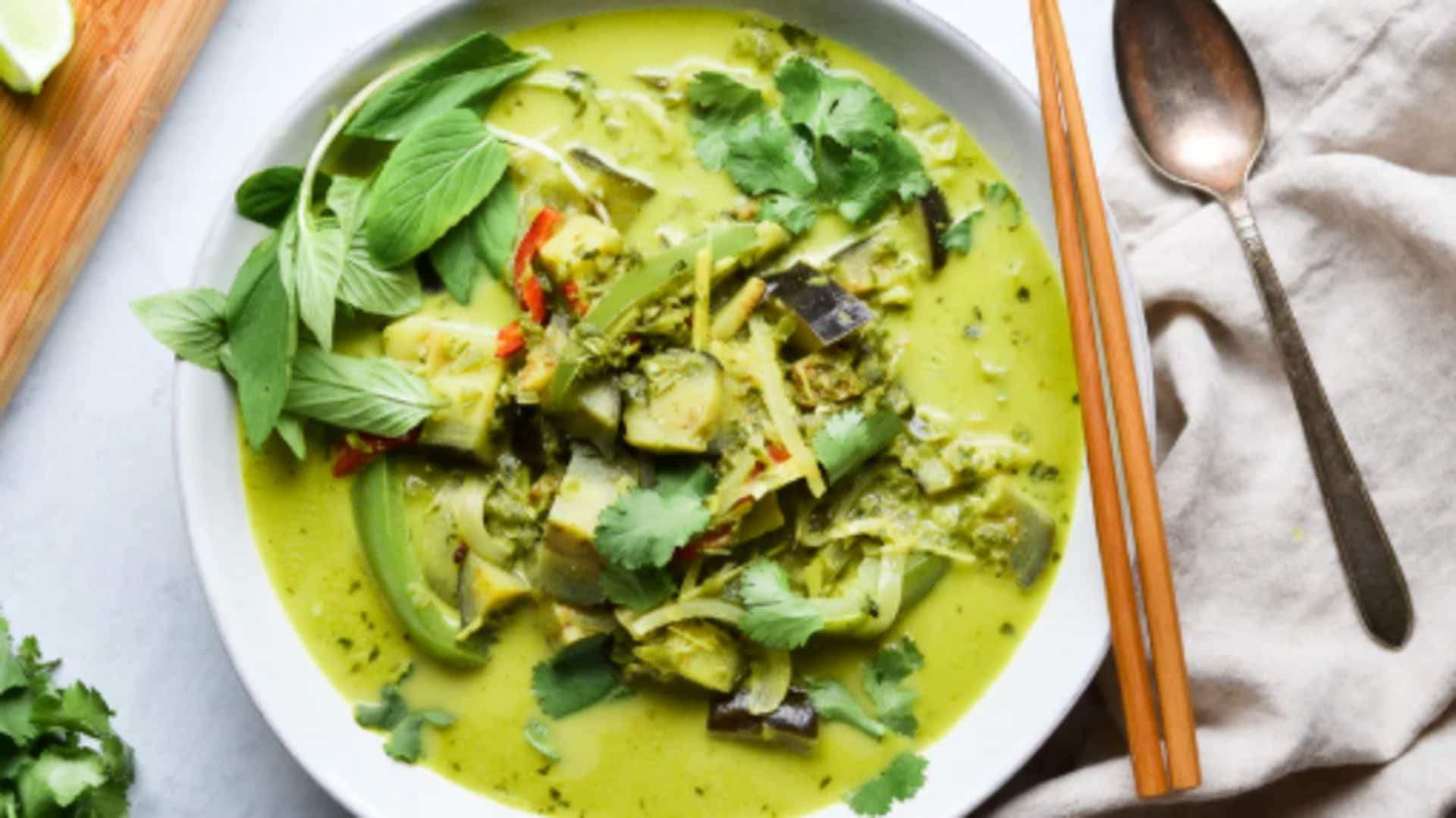
Evolution of Thai green curry: Origin and variations
What's the story
Thai green curry is a delicious dish that has its roots in the rich culinary traditions of Thailand. Famous for its vibrant color and aromatic flavors, this curry has a history that goes back centuries. Its unique blend of ingredients and preparation methods have made it a staple in Thai cuisine. Knowing its history gives you an appreciation of the cultural significance and evolution of this beloved dish.
#1
Origins of green curry
Green curry's origins can be traced back to central Thailand, where it was first created as part of royal cuisine. The name "green" comes from the green chilies used in the paste, which give it its distinct color. Over time, this curry became popular across different regions of Thailand, each adding its own local ingredients and flavors.
#2
Traditional ingredients used
The traditional green curry paste is made from fresh green chilies, garlic, shallots, lemongrass, galangal, kaffir lime leaves, coriander root, and shrimp paste. These ingredients are pounded together to form a fragrant paste that forms the base of the dish. Coconut milk is then added to give it a creamy texture and balance out the spiciness.
#3
Regional variations across Thailand
While central Thailand is known for its traditional green curry with eggplants and basil leaves, other regions have their own variations. In northern Thailand, for instance, you may find different vegetables or herbs based on local availability. These regional variations highlight how Thai cuisine adapts to local tastes while retaining its core identity.
#4
Modern adaptations in global cuisine
In recent years, Thai green curry has become a global favorite with chefs across the world putting their own spin on it. Some modern adaptations may include substituting traditional ingredients with locally available ones or tweaking spice levels for different palates. Despite these changes, the essence of this classic dish remains intact as it continues to be loved by many around the world.